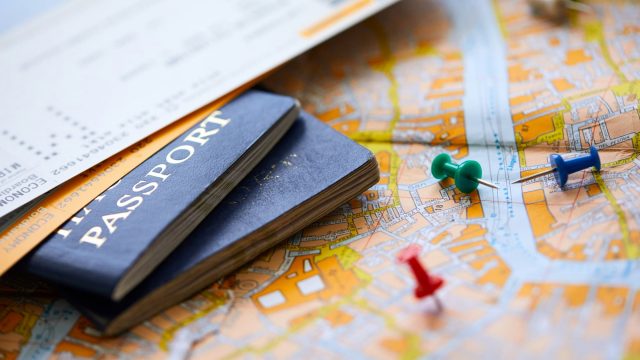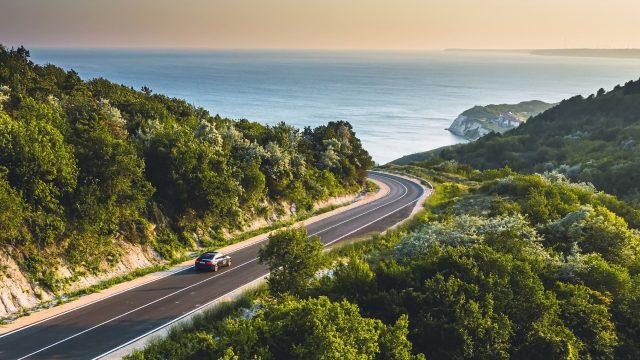Mother Nature is a mind blowing goddess. Even the simple things we take for granted, like the sun rising each day, clouds forming in the sky and falling rain are pretty incredible when you take the time to actually think about it. That’s before you consider more extreme examples such as ball lightening and tornadoes! Come winter however, even more bizarre events can take place. As a case in point, here are some of winter’s most dramatic natural phenomena.
Brinicles
If you watched the BBC and David Attenborough’s collaborative series “Frozen Planet” back in 2011, this wintry phenomena may ring some bells with you. Dubbed an ‘icicle of death’, it is caused by icy, brine water which is denser than the sea water it melts into. Freezing and killing everything it touches including sea life and corals, it is both an unusual and deadly phenomenon that takes place in Antarctica.
Polar Nights
Polar Nights are the definition of a night which lasts for more than a 24 hour period. This dramatic natural phenomenon only occurs inside the Arctic Circle. When polar nights occur, it is by far the best time of year to witness the stunning Northern Lights! The opposite event is known as Midnight Sun which indicates daylight for a 24 hour period. Head to any Scandinavian country such as Norway, Sweden and Finland to witness polar nights!
Ice Bubbles
A lake in Canada, Abraham Lake in fact, has become world famous particularly with photographers who are keen to capture the ice bubbles beneath the surface. This rare phenomenon is best known to occur here and happens as a result of trapped methane gas. The gas is created from the decomposition of organic matter such as plants in the water which sinks to the lake bed. Once it begins to breakdown the methane is produced and the bubbles escape to surface, causing what are known as ice bubbles. The phenomenon happens all over the Arctic region, but Lake Abraham is best known for it.
Snowflakes
Snowflakes may not be dramatic in the typical sense but it’s easy to forget just how incredible they are. Whilst each snowflake shares a hexagonal structure, every single snowflake will always be unique. Still you may not find this impressive but when you then consider how many individual snowflakes are formed during one bout of wintry weather, it becomes far more remarkable! Created practically from thin air, they are formed by way of water vapour which freezes into a minute crystal of ice and then grows as it falls to the ground whilst maintaining its 6 point structure. You’ve all seen snowflakes before but perhaps not in their microscopic magnificence.
Ice Storms
Going by many different names, ice storms are both an impressive and scary phenomenon. A winter storm that is identified by freezing rain, entire cities can be transformed into glistening ice lands, with glaze ice engulfing everything from trees to cars and buildings, sometimes inches thick. They can have a devastating effect, causing extensive and expensive damage as well as power failures and blocked roads, causing knock on problems. They occur when warm air is trapped between two layers of cold air. Despite their obvious hazards, they are certainly a dramatic phenomenon that will always fascinate us. Usually they happen in USA, specifically North Carolina, West Virginia, Pennsylvania, Oregon, New York and southern Washington as well as Canada.
Nacreous Clouds
This beautiful phenomenon is extremely rare but dramatic for their beauty; they are often nicknamed ‘Mother of Pearl clouds’ because that’s exactly what they’ll remind you of, if you are ever lucky enough to see them. They form close to mountain ranges which produce gravity waves in the lower stratosphere, at altitudes of 49,000–82,000ft and are made up of ice particles when temperatures reach -85°c. They are beautiful but incredibly destructive to the world’s atmosphere and can have a damaging effect on the ozone layer.
Sun Pillars
Sun pillars again may not be classified as dramatic natural phenomena by everyone but they are certainly visually appealing and that’s good enough for me for their inclusion in this list! You’ll usually see a sun pillar during sunrise or sunset and is created by the reflection of light from ice crystals.
Snow Rollers
Snow rollers don’t happen that often but you can probably work out what they are from their name alone. They look like a log of snow, a bit like a hay bale, and occur when strong winds blow chunks of ice and snow into cylindrical shapes across open spaces. They can range from a few inches big to a foot across! It’s nature’s version of rolling a giant snowball and can happen anywhere.
Have you seen any of winter’s most dramatic natural phenomena in the flesh? Perhaps you’ve seen something that we haven’t listed here, if so, leave a comment and tell us about it. For ideas on winter holidays where you may be able to catch a glimpse of some of these natural wonders take a look at our favourite winter destinations!






Living in Australia I haven’t really experienced many winters that dip below 5 Celsius. But I think the brinicles have my vote for most dramatic (and awesome!)